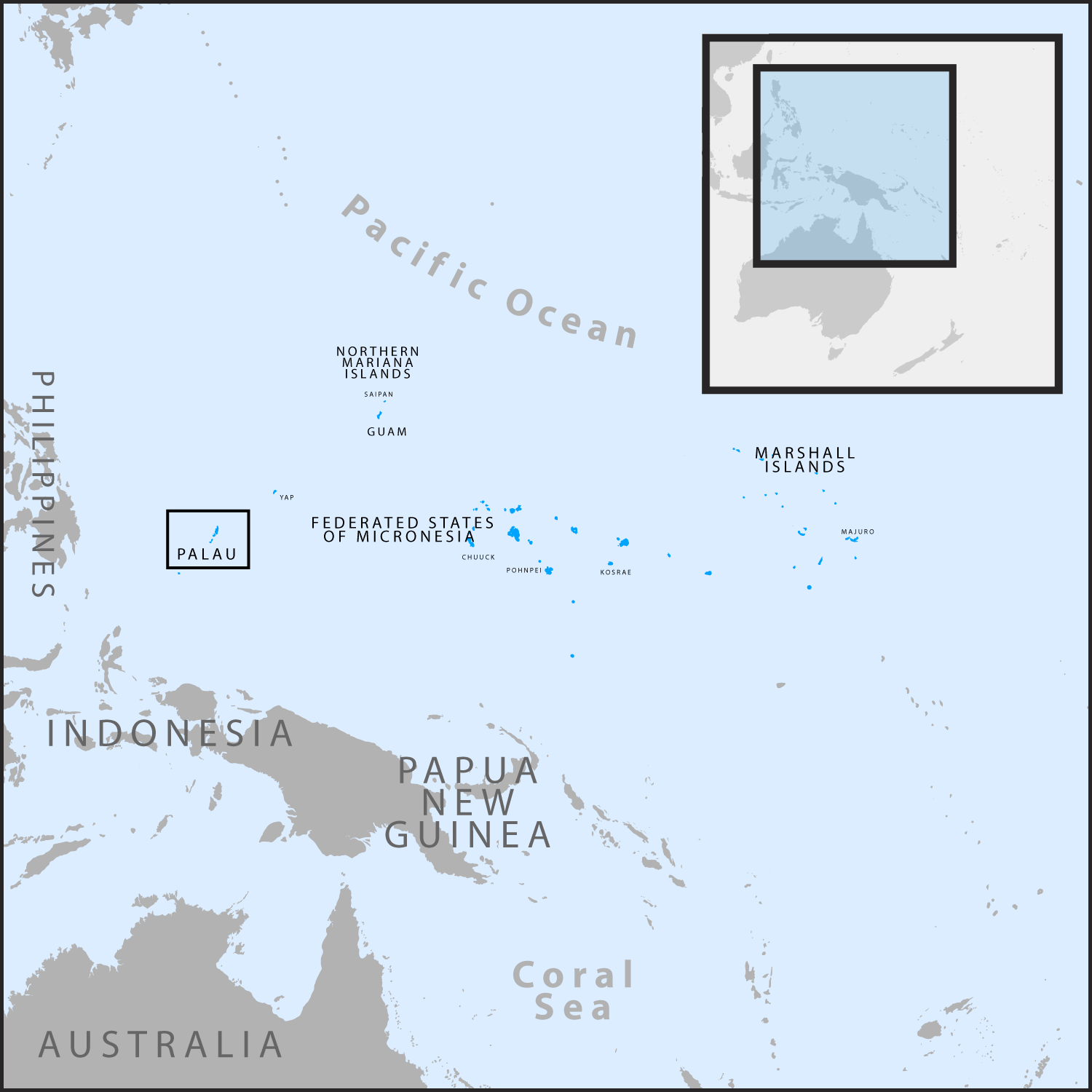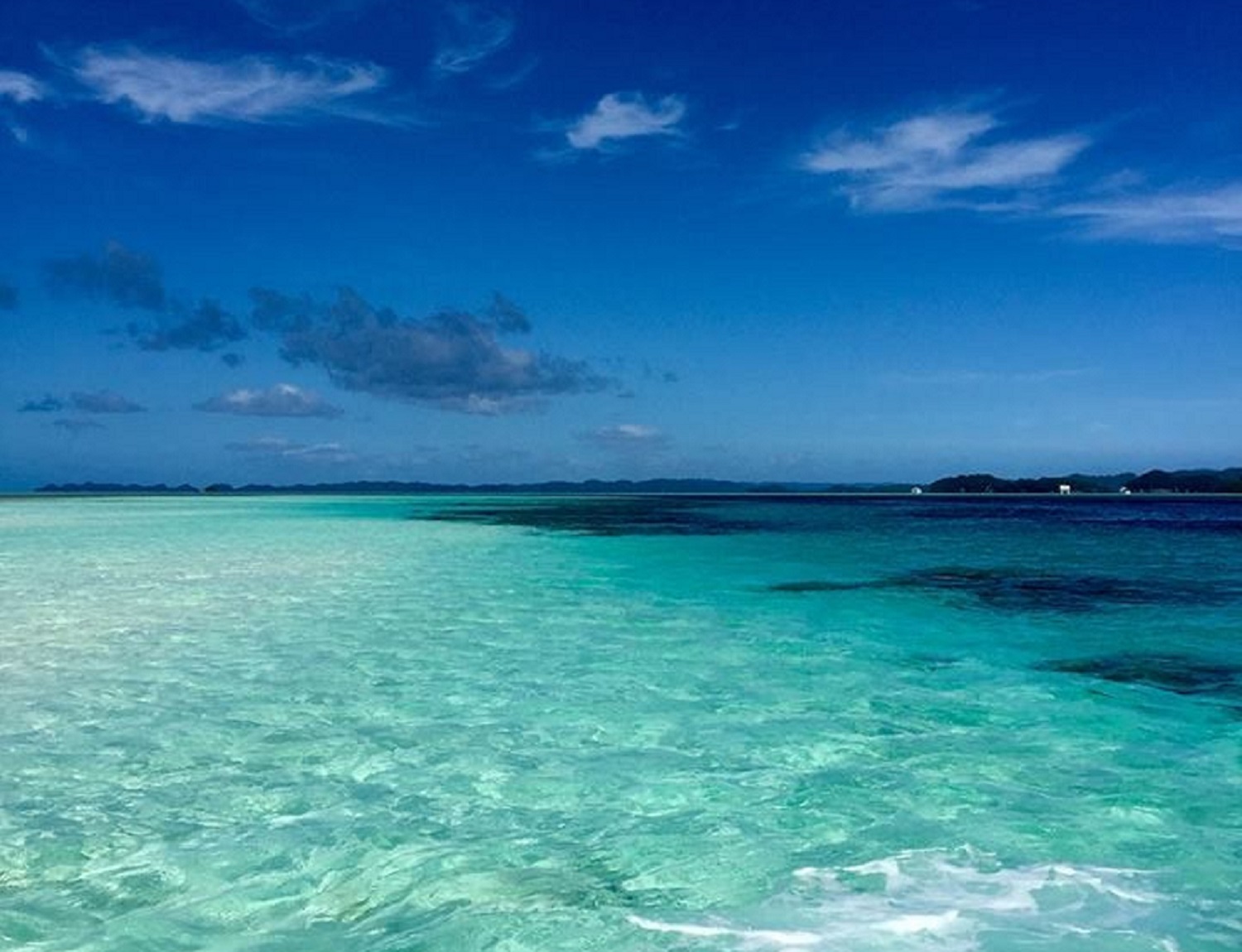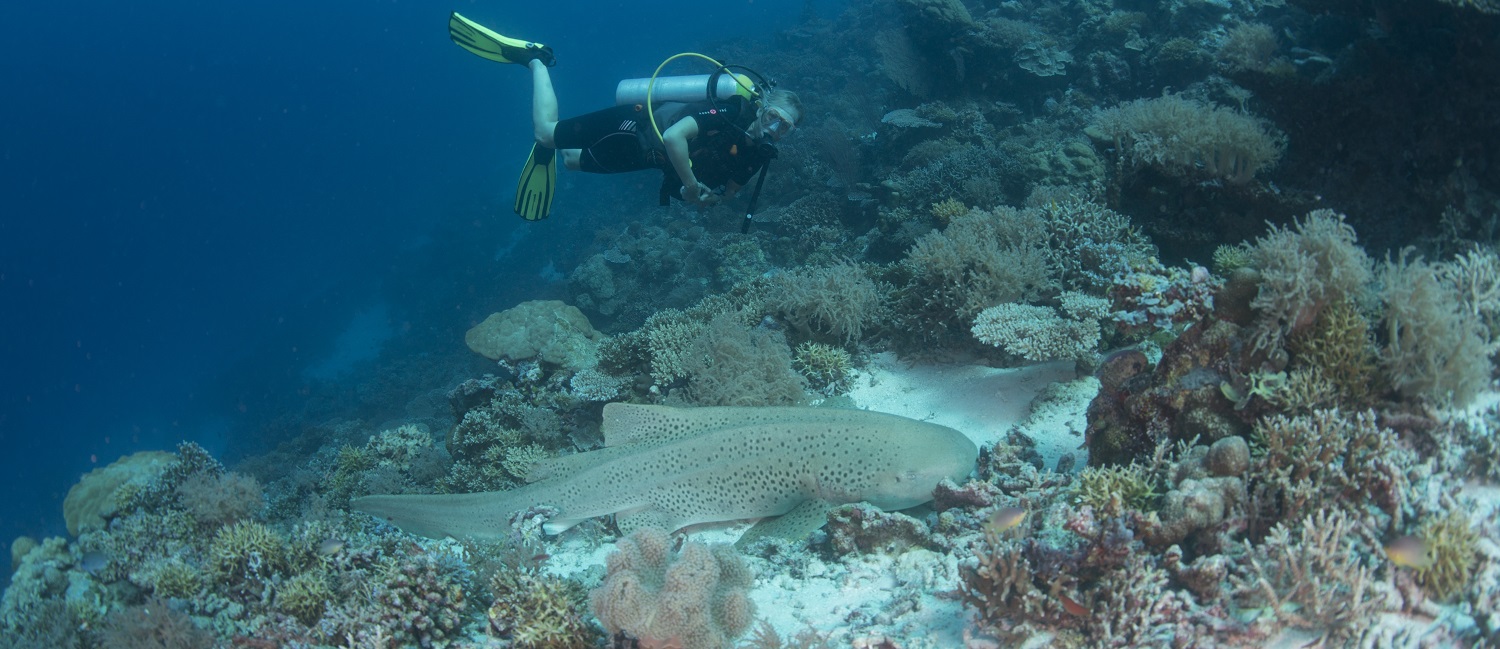The islands and waters of Palau are a scuba diver’s paradise. Comprising 300 volcanic and limestone islands which emerge out of the Pacific about 1,500 kilometres east of the Philippines, the combination of unspoiled coral reefs, abundant sharks, mantas and other pelagic life along with countless tropical fish provide a unique underwater experience. On land, the tropical flora and fauna, the idyllic white-sand beaches of the uninhabited Rock Islands, and the warm welcome from the Palauan and international dive guides make it a special – if remote – spot.

Palau and its population of 20,000 have only enjoyed independence since 1994. A presidential republic, it remains a protectorate of the USA which continues to provide defence funding and access to social services as it has done since the end of the Second World War; and the dollar remains the country’s currency. Palau seems very comfortable with this relationship while also being rightly proud of its own global leadership in marine protection.
It set up the world’s first shark sanctuary in 2001, and in 2015 established a marine protection area banning all commercial fishing from 80% of its waters while ensuring the remaining 20% remain open only to fishing by locals and a limited number of small commercial operations. The guides I dived with told me that they were already starting to see the positive impact of this with an increase in shark and dolphin sightings since the ban.
This beautiful archipelago has everything the adventurous diver could want: blue holes, wrecks, drift dives and spectacular drop offs. It was created some 35 million years ago when the Pacific and Philippine plates of the earth’s crust collided. From a diver’s perspective this matters because the islands consist of a mixture of volcanic rock and porous limestone which create the perfect foundations for coral reefs and cave systems. Some of the richest coral reefs on the planet surround the islands and it enjoys exceptionally high marine biodiversity with approximately 700 coral species, 1,500 resident fish species, and an abundance of the big pelagic species. Its famed Blue Corner is considered by many to be one of the finest dives anywhere in the world.

Most of the 130,000 or so visitors who make the journey each year (mainly from Asia and the US west coast) come to dive for a week to ten days, often combining their time on Palau with a week in relatively nearby Chuuk, Guam or Yap. But I was lucky enough to be calling Palau home for a month while I undertook a PADI Divemaster internship at Palau’s most established dive shop, Sam’s Tours.
Set up by Washington state native Sam Scott in 1990, Sam’s has grown from a one-man-band to a vibrant diving and kayaking centre with a staff of 80 and during the December to April peak season, up to 120 guests a day. Its internship programme provides a well-structured opportunity to qualify as a PADI Divemaster – the first rung on the professional qualification ladder in scuba diving. I had been attracted to Sam’s because of its dedicated training centre with instructors who had decided they wanted to focus on teaching rather than guiding.
On arrival, I was assigned two instructors who would become not just my formal teachers but also my mentors and friends, enthusiastically sharing their experience, expertise and tips as well as inviting me into their homes and social lives. I was also provided with a detailed timetable for my month on Palau and handed a bag full of pretty chunky reading materials and assignments. It was clear that this was no typical holiday and that in order to successfully complete the internship and qualify as a PADI Divemaster there was some hard work ahead.
The working day started at 7.30am carrying (heavy) tanks, first aid and other equipment onto the dive boats and making sure lunches and cold drinks were provided for guests who had come for fun diving. A good Divemaster intern – my new colleagues advised me – is one who anticipates what the guides need. As a rookie, keeping on the right side of the guides – whom you want to mine for advice and hopefully get on their boat at some point – was how the first hour of the day was spent.
In the first two weeks, once the guests and their equipment were loaded onto the boats and set up, it was time to wave them goodbye from the dock before stepping into the classroom or getting underwater in the training dive area off the dock to learn and perfect the core skills required to become a Divemaster. A qualified divemaster can not only guide qualified divers but also run refresher courses for qualified divers and assist instructors with the training of new divers and therefore the internship and the formal PADI course requirements are designed to provide both the theory and hands-on practical experience in these areas.
In addition, there are a number of tests and assignments designed to build confidence and knowledge of underwater navigation, search and rescue, first aid, and equipment handling. PADI is also keen to test how you handle stress underwater and therefore the course includes the famed and feared “Underwater Equipment Exchange While Buddy Breathing Test”. This involves switching all scuba equipment with your buddy including tank, mask, snorkel and fins underwater while sharing air (swapping one regulator between the two participants).

After a couple of weeks of study and skills practice, I was deemed ready to be let loose (under careful and close supervision of instructors and guides) on guests. On a dive boat, this initially involved assisting with less experienced divers as they set up and donned their equipment and during the dive; bringing up the rear of a dive group to ensure everyone is okay and accounted for and helping everyone to get out of the water safely at the end of the dive. Towards the end of my internship, I was required to brief guests on the dive site and to lead the dive.
Back at the training centre, I spent time assisting instructors as they led various courses demonstrating skills, keeping an eye on the group while the instructor helped an individual student or simply being the victim during rescue diver course scenarios. The working day ended once the last dive boat was safely home and unloaded. Evenings in the first couple of weeks were spent reading and studying for the exams (admittedly usually over a cocktail or two with my fellow Divemaster intern) but by the start of the third week, I was able to sample a bit more of Palaun restaurants, bars and nightlife.
In contrast to the verdant underwater environment and in spite of its lush tropical appearance, Palau is quite a harsh environment for humans. With the exception of coconuts, papaya and mango, these volcanic and limestone islands do not lend themselves well to agriculture and therefore the vast majority of the foodstuffs have to be shipped in. There was palpable excitement among the staff at Sam’s when a container ship was spotted heading to the harbour. Nonetheless, there are some good eateries in and around downtown Koror.
At the more expensive and exclusive end of the spectrum is Elilai which is perched on a hill edge and has a wonderful view. A firm favourite was Kramers, a much more informal restaurant/bar popular with the international dive community, serving excellent homemade food and also a great place for live music. It would be a missed opportunity to come to Palau and not to make it to one of the local (rather than western) bars. You will be made most welcome, undoubtedly be asked to dance (but without any hassle) and enjoy a good time Palaun style.

Surrounded by Palaun’s joie de vivre, the country’s natural beauty and the incredible diving, it would be easy to overlook the often painful history of this island nation. First colonised by the Spanish, it was then ruled by the Germans who mined for phosphate in the outlying southern islands of Peleliu. After the First World War, the Japanese moved in and ran a famously harsh regime. The most bitter period of Palau’s history, however, took place from September 1944 when the US Marines fought the Battle of Peleliu against the Japanese in an attempt to capture an airstrip on the island. The US had predicted the island could be secured within four days. But because of Japan’s cleverly crafted fortifications and strong resistance, the battle lasted more than two months.

In the US it was a highly controversial battle in part because of the questionable strategic rationale for launching the attack but also because of the high casualty rate. Some 2,336 American marines and 10,695 Japanese soldiers lost their lives and almost 8,500 were wounded. While the Americans eventually managed to take control of the island, the prized airstrip was never used. A day tour of the island to visit the battle sites, Japanese cave fortifications (where empty sake bottles and human remains still languish), monuments and a small museum is a moving reminder of a paradise lost for thousands of young men.
There are a couple of natural phenomena unique to Palau which have to be experienced. Jellyfish Lake is one of 70 saltwater ponds that were once connected to the ocean but are now cut off. The isolated lagoons became the perfect setting for a jellyfish explosion, which were trapped there 12,000 years ago after a rise in sea levels following the Ice Age. Feeding on quick-growing algae and with no predators to keep them in check, the jellyfish flourished but evolution made their stingers redundant. During the day, the more than one million jellyfish migrate from one side of the lake to the other to follow the path of the sun, which feeds the algae they survive on. And, amazingly, you can swim among them as they do.

The second unmissable day trip is an early morning dive with the pioneering team at Unique Diving Experience. During Full and New Moon, different species of fish gather in huge aggregations to spawn. Numbers can vary from hundreds to thousands depending on the species. These mind-blowing spawning events usually attract Palau’s biggest predators too. I found myself a few metres away from a bull shark while observing an underwater firework display of energy and excitement generated by thousands of spawning red snapper.

Having made the long journey to Palau you should spend as much of your time here as possible underwater but it is worth spending a day on land to drive around the largest island of Babeldaob to get a flavour of the country away from the scuba set. A stop at the country’s capital, Ngerulmud, to view the rather incongruous Government buildings is worthwhile. Although I ran out of time to do so, visitors and locals told me that a few days spent on the outer islands is the ultimate get-away-from-it-all experience.
Training to become a Divemaster is not the same as being on a relaxing dive holiday. It requires commitment and hard work but it is a wonderful, challenging experience which will make you a much better diver, dive buddy and even open the door to a new career (even if it is only in your spare time). Palau is a spectacular place to do it. If you can’t get the minimum of a month away to do a Divemaster internship, do at least come for a holiday.
The country has some big challenges ahead, including a shortage of fresh water, and a fragile infrastructure coupled with increasing demand particularly from Chinese tourists. But it also has a good track record of protecting its environmental assets and in implementing the bold decisions it has taken to do so. Its welcoming people rely on tourism for their economic prosperity. As you head out on a dive boat in the sunshine, scuttling across the turquoise waters towards the Rock Islands and some of the best diving on the planet, you won’t regret the decision to visit.
